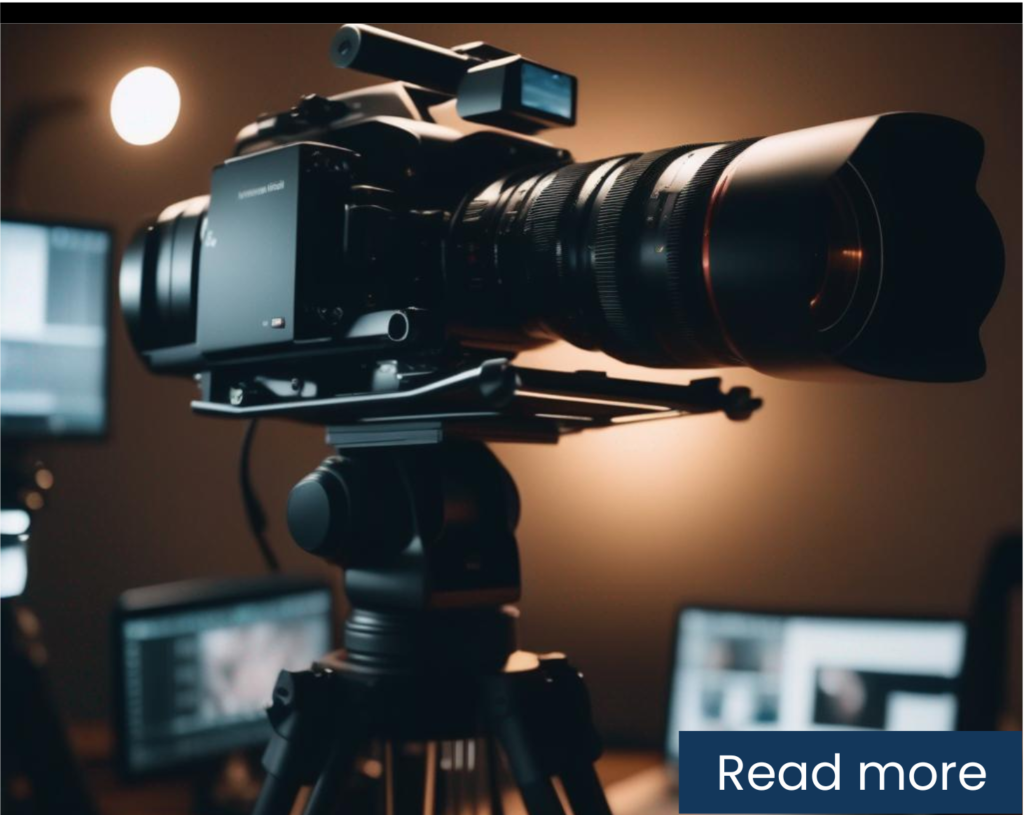
Present Simple Tense 1
English Blogs “Let’s Learn, Explore, and Connect to the World” Present Simple Tense 1 I. Introduction to the Present Simple Tense in English Mastering the

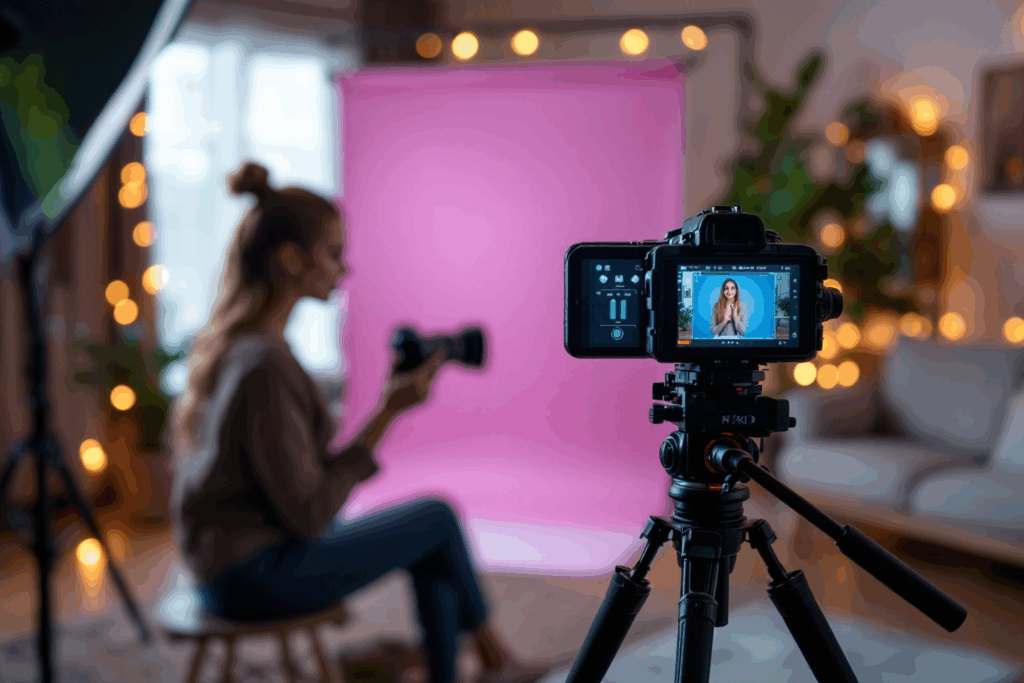
 In the active world of digital marketing, influencer marketing has emerged as a powerhouse strategy, transforming the way brands connect with their audience. At its core, influencer marketing is about leveraging the reach and credibility of individuals who hold sway over a significant following on social media platforms, particularly Instagram. This strategy harnesses the power of personal recommendation, which has been a cornerstone of consumer trust for generations, adapted for the digital age.
In the active world of digital marketing, influencer marketing has emerged as a powerhouse strategy, transforming the way brands connect with their audience. At its core, influencer marketing is about leveraging the reach and credibility of individuals who hold sway over a significant following on social media platforms, particularly Instagram. This strategy harnesses the power of personal recommendation, which has been a cornerstone of consumer trust for generations, adapted for the digital age.
Influencers, with their loyal followers and highly curated content, act as modern-day brand ambassadors, bridging the gap between businesses and potential customers in a more genuine and engaging way than traditional advertising methods.
 Instagram, with over a billion active users, serves as the perfect stage for this form of marketing. Its visually driven platform allows for vivid storytelling and personal engagement, making it an ideal space for influencers to connect with their audience and showcase brand collaborations. The significance of Instagram in influencer marketing cannot be overstated; it’s where visual content thrives, where trends are set, and where brands can see substantial engagement and growth through strategic partnerships.
Instagram, with over a billion active users, serves as the perfect stage for this form of marketing. Its visually driven platform allows for vivid storytelling and personal engagement, making it an ideal space for influencers to connect with their audience and showcase brand collaborations. The significance of Instagram in influencer marketing cannot be overstated; it’s where visual content thrives, where trends are set, and where brands can see substantial engagement and growth through strategic partnerships.
The aim of this article is twofold. First, to elucidate the concept of influencer marketing and its unparalleled significance on Instagram—a platform where visuals speak louder than words and where engagement metrics often translate directly to brand success. Second, to guide readers through the meticulous process of identifying and partnering with the right influencers. This journey involves more than just matching demographics; it requires a in-depth understanding of brand values, influencer ethos, and the art of crafting collaboration strategies that resonate with audiences and yield tangible results. As we navigate through the ins and outs of building successful brand collaborations on Instagram, the goal is to provide professionals with the knowledge and tools necessary to leverage this powerful marketing channel effectively.
 In today’s digital era, Instagram has risen not just as a social media platform but as a pivotal force in digital marketing. Its inception revolutionized the way brands approach marketing, moving beyond traditional mediums to embrace a more visual and interactive form of storytelling. This transformation is largely driven by Instagram’s inherent ability to facilitate a visual narrative, making it an invaluable tool for brands to connect with their audience on a personal and emotional level.
In today’s digital era, Instagram has risen not just as a social media platform but as a pivotal force in digital marketing. Its inception revolutionized the way brands approach marketing, moving beyond traditional mediums to embrace a more visual and interactive form of storytelling. This transformation is largely driven by Instagram’s inherent ability to facilitate a visual narrative, making it an invaluable tool for brands to connect with their audience on a personal and emotional level.
The power of a compelling image or video to tell a story, convey a message, or evoke an emotion is unmatched, and Instagram provides the perfect canvas for this visual storytelling.
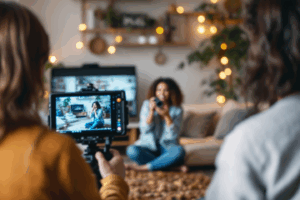 Instagram’s impact on digital marketing extends beyond mere aesthetics. It has fundamentally changed how brands strategize their online presence. In an age where consumer attention spans are fleeting, Instagram’s visual-first approach ensures that messages are not only seen but felt, leading to in-depth engagement and a firmer emotional connection with the audience. This shift towards visual storytelling has led brands to become more creative and authentic in their communication, a trend that is reshaping marketing across industries.
Instagram’s impact on digital marketing extends beyond mere aesthetics. It has fundamentally changed how brands strategize their online presence. In an age where consumer attention spans are fleeting, Instagram’s visual-first approach ensures that messages are not only seen but felt, leading to in-depth engagement and a firmer emotional connection with the audience. This shift towards visual storytelling has led brands to become more creative and authentic in their communication, a trend that is reshaping marketing across industries.
The importance of visual storytelling on Instagram can be best understood through its role in shaping consumer perceptions and behaviors. A well-crafted image or a creatively produced video is able to capture the essence of a brand, its values, and its personality, making it more relatable and trustworthy to its audience. This level of engagement is crucial in a digital landscape crowded with content, where standing out and resonating with your audience can mean the difference between being noticed and being overlooked.
 Influencers, with their ability to humanize content and present it through a personal lens, play a crucial role in this visual storytelling paradigm. They bring stories to life in a way that is authentic, engaging, and relatable, often turning a simple product showcase into a compelling narrative about lifestyle, values, or personal experiences. This transformation of product placement into narrative content has a profound impact on consumer perceptions, making the brand more approachable and its products more desirable.
Influencers, with their ability to humanize content and present it through a personal lens, play a crucial role in this visual storytelling paradigm. They bring stories to life in a way that is authentic, engaging, and relatable, often turning a simple product showcase into a compelling narrative about lifestyle, values, or personal experiences. This transformation of product placement into narrative content has a profound impact on consumer perceptions, making the brand more approachable and its products more desirable.
Moreover, influencers have the unique ability to shape behaviors and trends. Their recommendations can sway purchasing decisions, their styles can set trends, and their endorsements can legitimize brands in the eyes of their followers. This influence is a testament to the trust they’ve built with their audience—a trust that brands can leverage to achieve their marketing objectives. When influencers share their genuine experiences with a product or a brand, it serves as a powerful form of social proof, encouraging their followers to explore, engage with, and ultimately trust the brand.
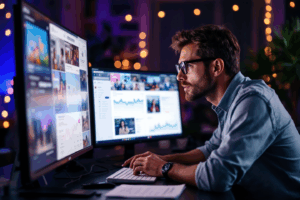 The symbiotic relationship between Instagram, influencers, and visual storytelling is shaping the future of digital marketing. It emphasizes the importance of authenticity, creativity, and personal connection in building brand loyalty and driving consumer engagement. As Instagram continues to evolve, offering new features and tools for creators and brands alike, its effect on marketing strategies and consumer behavior is expected to grow even further, solidifying its role as one of the main players in the digital marketing landscape.
The symbiotic relationship between Instagram, influencers, and visual storytelling is shaping the future of digital marketing. It emphasizes the importance of authenticity, creativity, and personal connection in building brand loyalty and driving consumer engagement. As Instagram continues to evolve, offering new features and tools for creators and brands alike, its effect on marketing strategies and consumer behavior is expected to grow even further, solidifying its role as one of the main players in the digital marketing landscape.
 Navigating the landscape of Instagram influencer marketing unveils a diverse ecosystem of creators, each with its own unique reach, audience, and influence. Broadly categorized into micro, macro, and mega-influencers, these individuals offer varying levels of engagement, authenticity, and audience demographics, making the platform a versatile tool for brand collaborations across different scales and objectives.
Navigating the landscape of Instagram influencer marketing unveils a diverse ecosystem of creators, each with its own unique reach, audience, and influence. Broadly categorized into micro, macro, and mega-influencers, these individuals offer varying levels of engagement, authenticity, and audience demographics, making the platform a versatile tool for brand collaborations across different scales and objectives.
 Micro-influencers, typically boasting a following of 1,000 to 100,000, are known for their high engagement rates and niche audiences. Their smaller, more focused follower base allows for deeper, more personal interactions, creating a sense of community and trust that is invaluable for brands looking to target specific demographics. Micro-influencers are often regarded as more authentic and relatable, making their endorsements highly effective for brands seeking to establish credibility and loyalty among niche markets.
Micro-influencers, typically boasting a following of 1,000 to 100,000, are known for their high engagement rates and niche audiences. Their smaller, more focused follower base allows for deeper, more personal interactions, creating a sense of community and trust that is invaluable for brands looking to target specific demographics. Micro-influencers are often regarded as more authentic and relatable, making their endorsements highly effective for brands seeking to establish credibility and loyalty among niche markets.
 Macro-influencers, are those having followers ranging from 100,000 to 1 million, strike a balance between reach and relevance. They offer broader exposure and have established a level of credibility and influence that resonates with a wider audience. While their engagement rates might not match those of micro-influencers, macro-influencers are capable of significantly increasing brand awareness and driving campaigns that require a larger reach without the celebrity status price tag.
Macro-influencers, are those having followers ranging from 100,000 to 1 million, strike a balance between reach and relevance. They offer broader exposure and have established a level of credibility and influence that resonates with a wider audience. While their engagement rates might not match those of micro-influencers, macro-influencers are capable of significantly increasing brand awareness and driving campaigns that require a larger reach without the celebrity status price tag.
Mega-influencers and celebrities, commanding audiences of over 1 million, offer unparalleled visibility. Their endorsements can catapult a brand into the spotlight, creating massive waves of awareness and interest. However, this level of influence comes with a heftier investment and often, a lower engagement rate. Brands leveraging mega-influencers are usually aiming for broad visibility and association with high-profile personalities to elevate their status or reach a massive audience quickly.
 Instagram caters to these diverse influencer strategies by offering a variety of content formats, each conducive to different styles of storytelling and engagement. Posts, the traditional images or videos shared on an influencer’s feed, provide a permanent fixture for brand collaborations, ideal for detailed storytelling or showcasing products.
Instagram caters to these diverse influencer strategies by offering a variety of content formats, each conducive to different styles of storytelling and engagement. Posts, the traditional images or videos shared on an influencer’s feed, provide a permanent fixture for brand collaborations, ideal for detailed storytelling or showcasing products.
 Stories, temporary 24-hour content, offer a more casual and immediate way to engage audiences, perfect for behind-the-scenes looks, quick reviews, or flash promotions.
Stories, temporary 24-hour content, offer a more casual and immediate way to engage audiences, perfect for behind-the-scenes looks, quick reviews, or flash promotions.
IGTV presents an opportunity for longer-form video content, allowing influencers and brands to dive deeper into topics, tutorials, or product demonstrations, fostering a more comprehensive engagement with the audience. Reels, Instagram’s answer to the short-form video trend, enable snappy, highly engaging content that can go viral, offering brands a chance to tap into current trends, memes, and challenges to capture the audience’s attention and encourage shares.
The landscape of Instagram influencer marketing is rich and varied, providing brands with an array of options to engage with their target audience through authentic, creative, and strategic collaborations. By understanding the unique advantages of different influencer tiers and content formats, brands can craft campaigns that resonate deeply with their desired demographic, driving engagement, awareness, and loyalty in an increasingly crowded digital space.
 In the vast expanse of Instagram, finding the right influencers for your brand is akin to searching for a needle in a haystack—challenging but entirely possible with the right strategies. This crucial step determines the effectiveness of your influencer marketing campaign, impacting everything from engagement rates to brand perception. The key lies in identifying influencers who not only have the reach but also align with your brand’s values, ethos, and target audience.
In the vast expanse of Instagram, finding the right influencers for your brand is akin to searching for a needle in a haystack—challenging but entirely possible with the right strategies. This crucial step determines the effectiveness of your influencer marketing campaign, impacting everything from engagement rates to brand perception. The key lies in identifying influencers who not only have the reach but also align with your brand’s values, ethos, and target audience.

Start by defining your brand’s core values, aesthetic, and target audience. Look for influencers who share similar values, have a complementary aesthetic, and engage an audience that matches your target demographic. This alignment ensures that the influencer’s content feels natural and authentic when promoting your brand, fostering a genuine connection with their followers.

Beyond follower count, measure an influencer’s engagement rate, which includes likes, comments, shares, and the overall interaction their content receives. High engagement rates indicate a loyal and active audience, which is more valuable than a large but passive follower base.
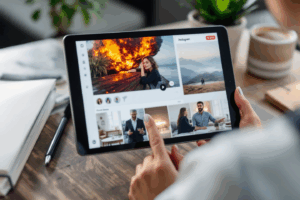
Evaluate the quality of the influencer’s content and their posting frequency. High-quality, consistent content keeps audiences engaged and shows the influencer’s commitment to their platform, making them a reliable partner for your brand.
 To streamline the process of finding and evaluating influencers, several tools and platforms are at your disposal. Tools like BuzzSumo, HypeAuditor, and Influencity allow you to search for influencers by niche, location, engagement rate, and other criteria. These platforms provide detailed analytics on an influencer’s audience demographics, engagement rates, and even the authenticity of their followers (identifying fake or bot followers)
To streamline the process of finding and evaluating influencers, several tools and platforms are at your disposal. Tools like BuzzSumo, HypeAuditor, and Influencity allow you to search for influencers by niche, location, engagement rate, and other criteria. These platforms provide detailed analytics on an influencer’s audience demographics, engagement rates, and even the authenticity of their followers (identifying fake or bot followers)

At the heart of successful influencer partnerships lies authenticity and trust. Influencers have cultivated their followings based on genuine connections and trustworthiness. When an influencer’s promotion of a product feels forced or incongruent with their usual content, it can erode trust, not just in the influencer but in the brand they’re promoting. Thus, selecting influencers who genuinely resonate with your brand and would likely use your products or services even without a partnership is crucial.
Moreover, allowing influencers creative freedom within the collaboration can enhance authenticity. Influencers know their audience best; giving them the space to create content that naturally integrates your brand into their usual content style can lead to more authentic and effective promotions.
In essence, finding the right influencers for your brand on Instagram requires a blend of strategic searching, thorough evaluation, and a deep understanding of the importance of authenticity and trust. By prioritizing these elements, brands can forge meaningful, impactful partnerships that resonate with their target audience and amplify their presence in the digital landscape.
 Crafting a successful influencer collaboration strategy is an art form that balances the brand’s objectives with the influencer’s creative autonomy, fostering a partnership that provides benefits to both parties and resonates with the audience. The foundation of this strategy is a clear, mutually beneficial agreement that outlines key elements such as goals, expectations, creative freedom, and metrics for success.
Crafting a successful influencer collaboration strategy is an art form that balances the brand’s objectives with the influencer’s creative autonomy, fostering a partnership that provides benefits to both parties and resonates with the audience. The foundation of this strategy is a clear, mutually beneficial agreement that outlines key elements such as goals, expectations, creative freedom, and metrics for success.
 Defined Goals and Objectives
Defined Goals and ObjectivesClearly articulate what the brand aims to achieve through the collaboration, be it increasing brand awareness, driving sales, or launching a new product. This clarity helps influencers align their content with these goals.
 Expectations and Deliverables
Expectations and DeliverablesSpecify the type and quantity of content to be created, posting schedules, and any branding guidelines. This ensures both parties are on the same page regarding the campaign’s scope.
 Creative Freedom
Creative FreedomWhile it’s important to have brand guidelines, allowing influencers creative control over the content ensures authenticity. Audiences can detect forced or overly scripted content, which may detract from the campaign’s effectiveness.
 Compensation Structure
Compensation StructureOutline how the influencer will be compensated, whether through monetary payment, free products, or other incentives. A clear understanding of compensation helps avoid misunderstandings later on.
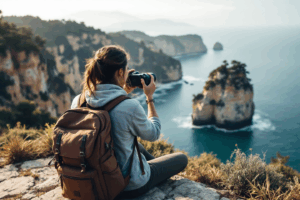 A lifestyle brand partners with a travel influencer to promote its new line of sustainable travel accessories. By allowing the influencer to document their journey using the products in exotic locations, the brand leverages the influencer’s authentic storytelling and visual content to showcase the product’s versatility and eco-friendly attributes, leading to increased brand visibility and sales.
A lifestyle brand partners with a travel influencer to promote its new line of sustainable travel accessories. By allowing the influencer to document their journey using the products in exotic locations, the brand leverages the influencer’s authentic storytelling and visual content to showcase the product’s versatility and eco-friendly attributes, leading to increased brand visibility and sales.
 A beauty brand collaborates with a micro-influencer known for their honest product reviews and skincare tips. The influencer creates a series of posts and stories detailing their skincare routine incorporating the brand’s products, emphasizing their personal, positive experience. The authenticity of the influencer’s content generates high engagement and trust, driving traffic to the brand’s website and boosting product sales.
A beauty brand collaborates with a micro-influencer known for their honest product reviews and skincare tips. The influencer creates a series of posts and stories detailing their skincare routine incorporating the brand’s products, emphasizing their personal, positive experience. The authenticity of the influencer’s content generates high engagement and trust, driving traffic to the brand’s website and boosting product sales.

Look beyond likes and followers; focus on the engagement rate as a more accurate measure of how effectively the content resonates with the audience.
Use unique promo codes or affiliate links to track how many sales or actions (like website visits or sign-ups) can be attributed to the influencer campaign.
Monitor comments, shares, and social mentions to gauge the audience’s sentiment towards your brand before and after the campaign.
Do a calculation of the return on investment by comparing the campaign’s costs against the revenue generated from the influencer’s efforts.
Successful influencer collaborations hinge on clear communication, mutual respect, and shared goals. By crafting a detailed agreement that addresses key elements and measuring the campaign’s impact with precise metrics, brands can maximize their influencer marketing efforts and achieve substantial results.
 Influencer marketing, while highly effective, comes with its own set of challenges and considerations. Navigating these potential pitfalls is crucial for brands aiming to leverage Instagram influencer partnerships successfully.
Influencer marketing, while highly effective, comes with its own set of challenges and considerations. Navigating these potential pitfalls is crucial for brands aiming to leverage Instagram influencer partnerships successfully.
One of the most significant challenges is partnering with influencers who don’t align with the brand’s values or audience. This mismatch can lead to campaigns that fail to resonate with the target demographic, wasting resources and potentially harming the brand’s reputation.
Influencer content that appears overly scripted or insincere can alienate audiences. Today’s consumers value authenticity and can easily detect when an influencer’s endorsement doesn’t stem from genuine appreciation or use of a product.
Relying solely on vanity metrics like follower counts or likes can be misleading. These numbers don’t always translate to actual engagement or sales, leading brands to misjudge the success of their campaigns.

Conduct detailed research to ensure potential influencers’ values, audience, and content style align with your brand. This includes reviewing past partnerships, audience demographics, and engagement quality.
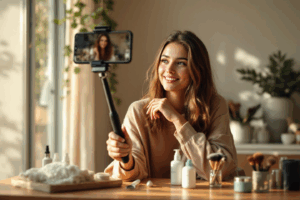
Allow influencers the creative freedom to integrate your brand into their content naturally. Authentic storytelling fosters genuine engagement and trust, enhancing the effectiveness of your campaign.

Shift focus from vanity metrics to more substantive measures of success, such as engagement and conversion rates, and return on investment (ROI). Utilize tracking tools and unique promotional codes to accurately assess campaign performance.

Cultivate ongoing partnerships with influencers whose values and audience align with your brand. Long-term collaborations lead to more authentic endorsements and deep understanding between the brand and the influencer, yielding better results over time.
Navigating the challenges of influencer marketing requires a strategic approach, emphasizing alignment, authenticity, and meaningful engagement. By adopting these best practices, brands can mitigate risks and maximize the impact of their influencer collaborations.
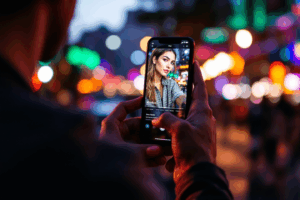 As we look towards the horizon, the future of influencer marketing on Instagram promises evolution and innovation. The platform continues to introduce new features like augmented reality (AR) filters, shopping capabilities directly from posts and stories, and more immersive video formats, all of which will significantly shape influencer marketing strategies. We can anticipate a shift towards even more authentic, interactive content, with influencers and brands leveraging these tools to create deeper, more engaging experiences for users.
As we look towards the horizon, the future of influencer marketing on Instagram promises evolution and innovation. The platform continues to introduce new features like augmented reality (AR) filters, shopping capabilities directly from posts and stories, and more immersive video formats, all of which will significantly shape influencer marketing strategies. We can anticipate a shift towards even more authentic, interactive content, with influencers and brands leveraging these tools to create deeper, more engaging experiences for users.
The fame AI or Artificial intelligence and machine learning will play a pivotal role in personalizing user experiences, and making influencer content more targeted and effective. Influencers who can seamlessly integrate these advancements into their content will thrive, offering unprecedented value to brands through highly customized and engaging campaigns.
 Moreover, the rise of micro and nano-influencers is set to continue, with brands recognizing the value of partnering with influencers who boast highly engaged, niche audiences. This shift underscores the importance of authenticity and relatability, principles that will remain at the core of successful influencer marketing.
Moreover, the rise of micro and nano-influencers is set to continue, with brands recognizing the value of partnering with influencers who boast highly engaged, niche audiences. This shift underscores the importance of authenticity and relatability, principles that will remain at the core of successful influencer marketing.
In this ever-evolving landscape, the key to success lies in continuous learning and adaptability. Brands and influencers alike must stay abreast of Instagram’s latest tools and features, embracing innovation and experimentation to captivate audiences and achieve their marketing goals. The future of influencer marketing on Instagram is bright, driven by creativity, technology, and a relentless pursuit of genuine connection.

English Blogs “Let’s Learn, Explore, and Connect to the World” Present Simple Tense 1 I. Introduction to the Present Simple Tense in English Mastering the

English Blogs “Let’s Learn, Explore, and Connect to the World” Present Simple Tense 2 II. Understanding the Present Simple Tense Definition and Structure At its
Discover your inner editing abilities with this complete guide made for beginners to master the art of video editing smoothly. ‘A Beginner’s Guide to Video Editing: Be a Pro in Just 24 Hours’ is your way to discover the secrets of professional-grade editing within a day.


